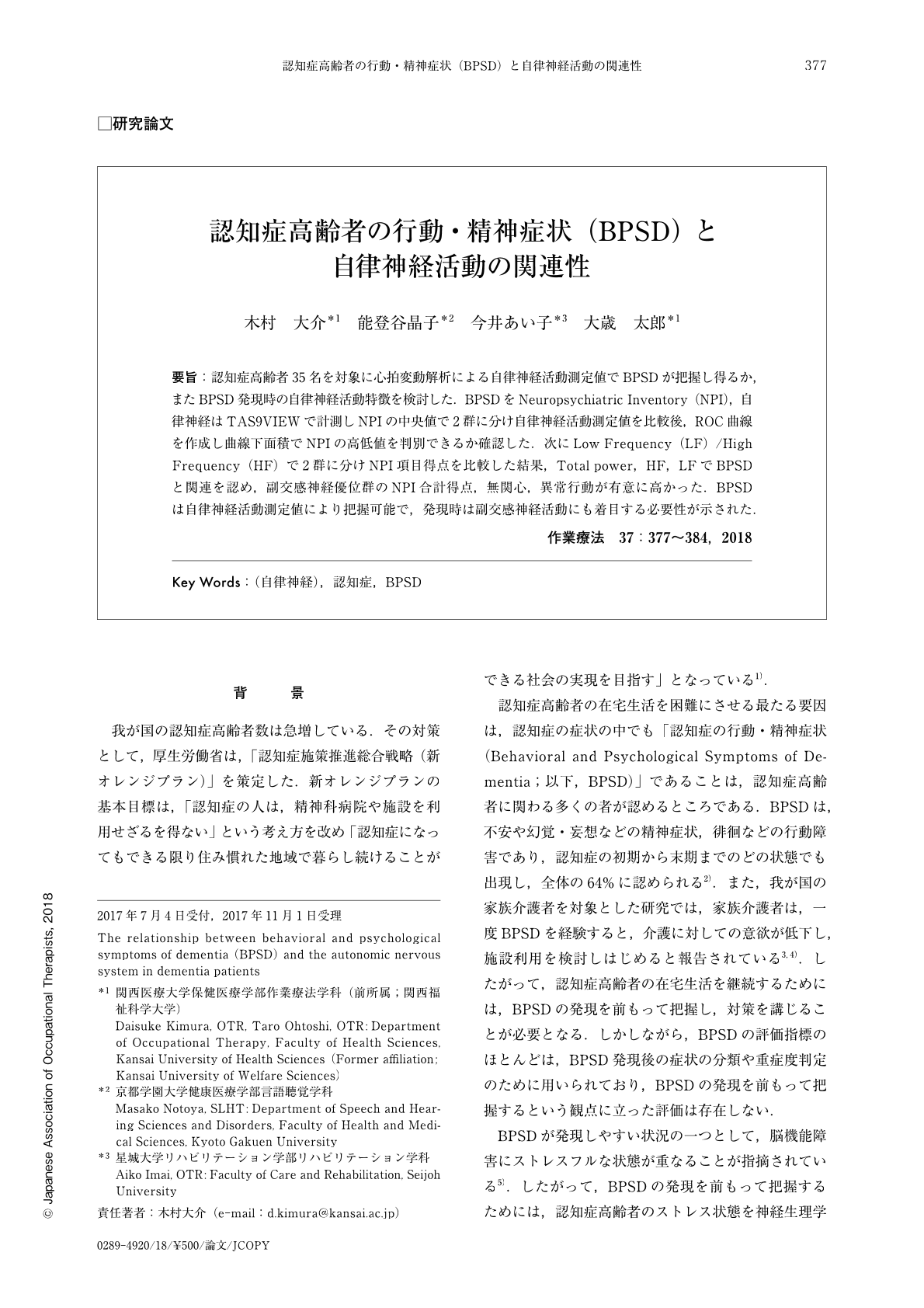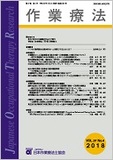Japanese
English
- 販売していません
- Abstract 文献概要
- 1ページ目 Look Inside
- 参考文献 Reference
- サイト内被引用 Cited by
要旨:認知症高齢者35名を対象に心拍変動解析による自律神経活動測定値でBPSDが把握し得るか,またBPSD発現時の自律神経活動特徴を検討した.BPSDをNeuropsychiatric Inventory(NPI),自律神経はTAS9VIEWで計測しNPIの中央値で2群に分け自律神経活動測定値を比較後,ROC曲線を作成し曲線下面積でNPIの高低値を判別できるか確認した.次にLow Frequency(LF)/High Frequency(HF)で2群に分けNPI項目得点を比較した結果,Total power,HF,LFでBPSDと関連を認め,副交感神経優位群のNPI合計得点,無関心,異常行動が有意に高かった.BPSDは自律神経活動測定値により把握可能で,発現時は副交感神経活動にも着目する必要性が示された.
This study aimed to examine the feasibility of predicting behavioral and psychological symptoms of dementia (BPSD) using heart rate variability analysis to measure autonomic nerve activity. This paper also examines BPSDs that are related to autonomic balance. Thirty-five elderly individuals with confirmed dementia were assessed, and BPSD was measured using the Neuropsychiatric Inventory (NPI). Autonomic nerve activity was measured with TAS9VIEW. For analysis, the subjects were separated into two groups: those split both above and those below the median value of the NPI data. A receiver operating characteristic curve was prepared by measuring the area under the curve in order to assess the usefulness of measuring autonomic nerve activity. Next, low to high frequency ratios (LF/HF) were used to classify the subjects into two additional groups: a sympathetic dominant group and a parasympathetic dominant group. The NPI scores between these two groups were compared, and BPSD was found to be associated with Total power (TP), HF, and LF. When parasympathetic nerve activity was dominant, the NPI total score was found to be significantly higher than average.

Copyright © 2018, Japanese Association of Occupational Therapists. All rights reserved.


